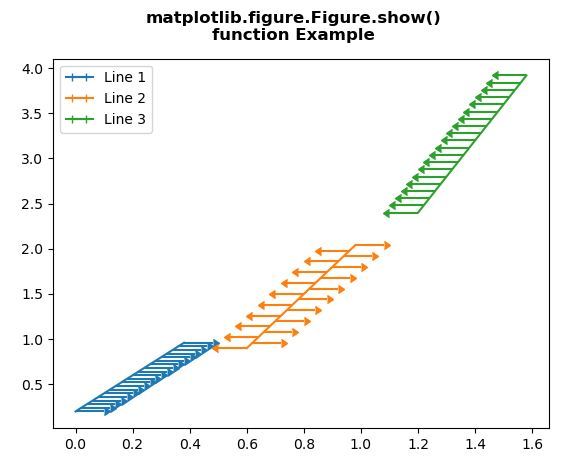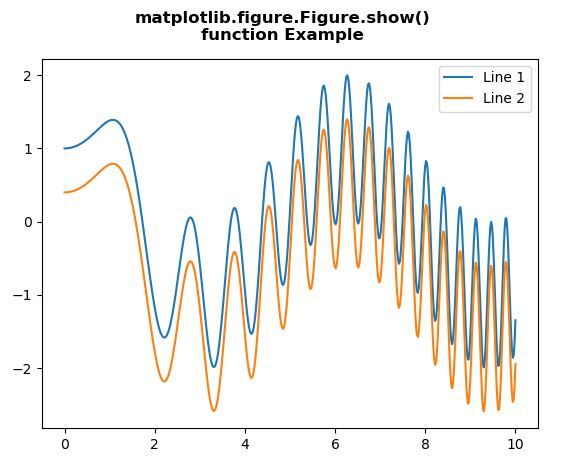Matplotlib es una biblioteca en Python y es una extensión matemática numérica para la biblioteca NumPy. El módulo de figura proporciona el artista de nivel superior, la figura, que contiene todos los elementos de la trama. Este módulo se utiliza para controlar el espaciado predeterminado de las subparcelas y el contenedor de nivel superior para todos los elementos de la parcela.
método matplotlib.figure.Figure.show()
El módulo de figura del método show() de la biblioteca matplotlib se utiliza para mostrar la ventana de la figura.
Sintaxis: show(self, warn=True)
Parámetros: este método acepta los siguientes parámetros que se analizan a continuación:
- advertir: este parámetro contiene el valor booleano.
Devoluciones: este método no devuelve ningún valor.
Los siguientes ejemplos ilustran la función matplotlib.figure.Figure.show() en matplotlib.figure:
Ejemplo 1:
# Implementation of matplotlib function
import matplotlib.pyplot as plt
import numpy as np
fig = plt.figure()
x = np.arange(20) / 50
y = (x + 0.1)*2
val1 = [True, False] * 10
val2 = [False, True] * 10
plt.errorbar(x, y,
xerr = 0.1,
xlolims = True,
label ='Line 1')
y = (x + 0.3)*3
plt.errorbar(x + 0.6, y,
xerr = 0.1,
xuplims = val1,
xlolims = val2,
label ='Line 2')
y = (x + 0.6)*4
plt.errorbar(x + 1.2, y,
xerr = 0.1,
xuplims = True,
label ='Line 3')
plt.legend()
fig.suptitle("""matplotlib.figure.Figure.show()
function Example\n\n""", fontweight ="bold")
fig.show()
Producción:
Ejemplo 2:
# Implementation of matplotlib function
import numpy as np
import matplotlib.pyplot as plt
x = np.linspace(0, 10, 500)
y = np.sin(x**2)+np.cos(x)
fig, ax = plt.subplots()
ax.plot(x, y, label ='Line 1')
ax.plot(x, y - 0.6, label ='Line 2')
ax.legend()
fig.suptitle("""matplotlib.figure.Figure.show()
function Example\n\n""", fontweight ="bold")
fig.show()
Producción:
Publicación traducida automáticamente
Artículo escrito por SHUBHAMSINGH10 y traducido por Barcelona Geeks. The original can be accessed here. Licence: CCBY-SA